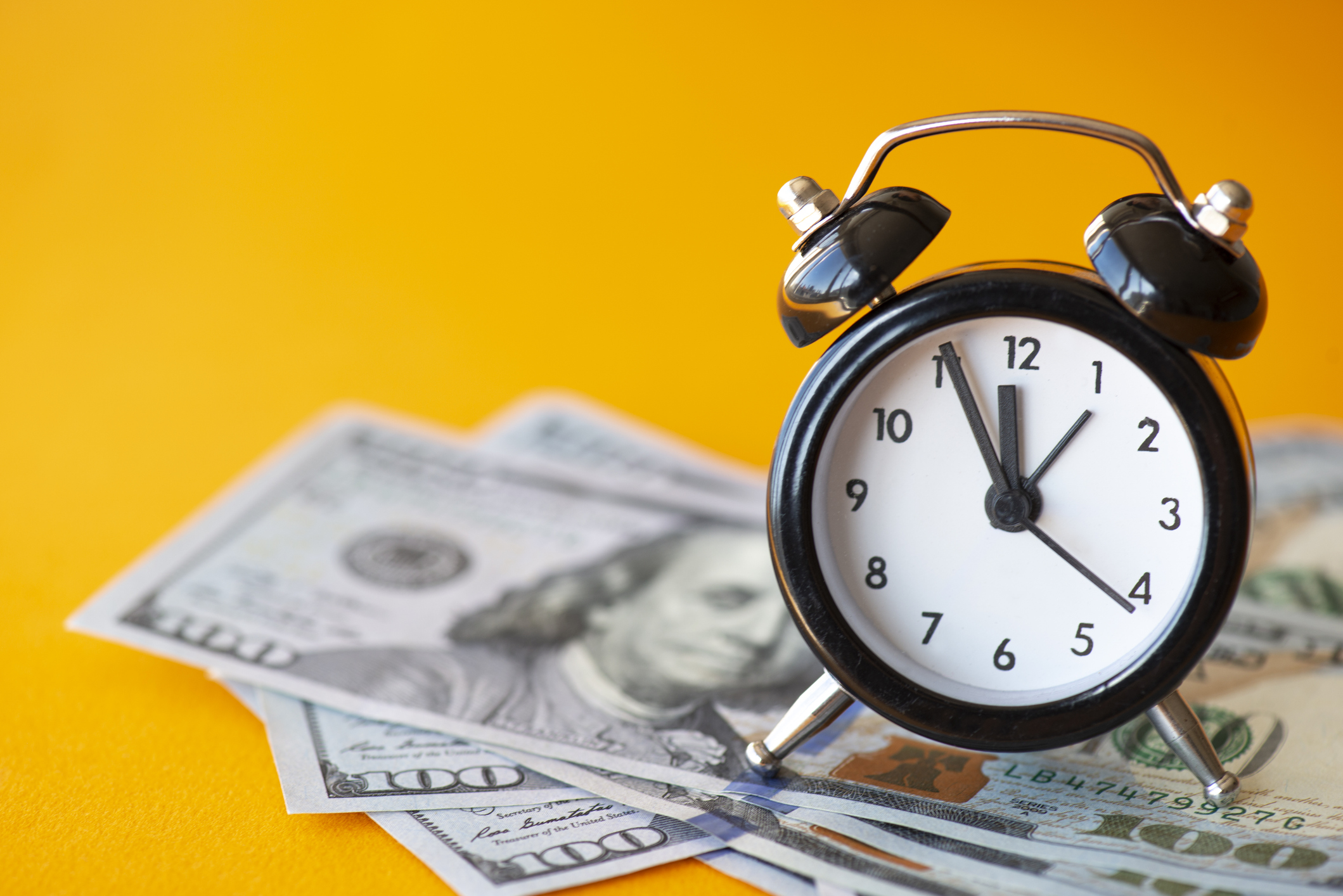IRA and 401(k) Contribution Limit Changes for 2025: What to Know
IRS inflation adjustments typically mean higher contribution limits for the new year.


You may be able to save more for retirement soon thanks to an increase in the 401(k) contribution limit for 2025. The IRS adjusts contribution limits and other tax provisions for inflation each year.
High inflation as of late, means this is the third year in a row the adjustments have resulted in a higher 401(k) contribution limit. But what about your IRA?
Here’s how much you can contribute to retirement accounts in 2025.

Sign up for Kiplinger’s Free E-Newsletters
Profit and prosper with the best of expert advice on investing, taxes, retirement, personal finance and more - straight to your e-mail.
Profit and prosper with the best of expert advice - straight to your e-mail.
2025 IRA contribution limits
The contribution limits for a traditional or Roth IRA increased last year but remain steady for 2025.
- You can contribute a maximum of $7,000 (same as 2024).
- Catch-up contributions for taxpayers 50 and older are also subject to cost-of-living adjustments, but these limits remain unchanged for 2025 at $1,000 ($8,000 total).
However, not everyone can make the maximum IRA contribution limits this year. You can only make the maximum contribution to your Roth IRA if your modified adjusted gross income (MAGI) is below the threshold set for the year.
- For 2025, single and head-of-household filers with a MAGI below $150,000 (up from $146,000 last year) can contribute the full $7,000 in 2025.
- The maximum contribution is reduced for these filers if their MAGI is between $150,000 and $165,000 and these taxpayers cannot contribute to a Roth IRA at all if their MAGI exceeds $165,000.
- For married couples filing jointly, the income phase-out range for 2025 is between $236,000 and $246,000 (up from between $230,000 and $240,000 last year).
- So, joint filers with a MAGI below $236,000 can contribute the full $7,000 for 2025, but these filers cannot contribute anything to an IRA with a MAGI greater than $246,000.
(Note: The above income limits do not apply to traditional IRAs.)
IRS 401(k) limit 2025
Contribution limits for 401(k), 403(b), most 457 plans, and the federal government's Thrift Savings Plan will increase by $500 for 2025. Eligible taxpayers can contribute $23,500 to these accounts in 2025 (up from $23,000 last year).
Savers saw a $500 increase in contribution amounts last year, so the $500 increase for 2025 may seem like more of the same.
Similarly, the contribution limit for SIMPLE plans increases to $16,500 this year (up from $16,000 last year). However, participants of an applicable SIMPLE plan may be able to contribute a higher amount of $17,600 under SECURE 2.0.
401(k) 2025 catch-up limit
There's no increase in catch-up contribution limits for taxpayers 50 and older for 2025. So, these taxpayers can still contribute an additional $7,500 in 2025 ($31,000 total).
However, under SECURE 2.0, a higher catch-up contribution limit applies for those aged 60-63 beginning next year. (Participants in that age range may contribute an additional $11,250 instead of $7,500.)
For more information see Kiplinger's report: New 2025 'Super Catch-Up' Contribution for Ages 60-63.
The catch-up contribution limit for employees 50 and over who participate in SIMPLE plans also remains unchanged for 2025, at $3,500 (certain applicable plans may have a contribution limit of $3,850).
But again, under a new change under SECURE 2.0, those who are 60, 61, 62, or 63 can contribute more to SIMPLE plans, ($5,250) for 2025.
IRA deduction phase-out thresholds for 2025
If you put money in a traditional IRA, you may be able to take a tax deduction for some or all of your contributions. (There is no deduction available for contributions to a Roth IRA.)
However, the deduction is gradually phased out if your income is above a certain amount.
Here are the phase-out ranges for 2025.
- For single taxpayers covered by a workplace retirement plan, the phase-out range is between $79,000 and $89,000 (up from between $77,000 and $87,000 last year).
- For married couples filing jointly, if the spouse making the IRA contribution is covered by a workplace retirement plan, the phase-out range is between $126,000 and $146,000 (up from between $123,000 and $143,000 last year).
- For an IRA contributor who is not covered by a workplace retirement plan and is married to someone who is covered, the phase-out range is between $236,000 and $246,000 (up from between $230,000 and $240,000 last year).
If you are married and filing a separate return (and covered by a workplace retirement plan), the phase-out range remains between $0 and $10,000.
That’s because this limit is not subject to a cost-of-living adjustment.
Saver's Credit income limit for 2025
Americans with lower and middle incomes who contribute to a retirement plan can claim the Saver's Credit on their federal tax return, which could lower their tax bill.
However, not everyone qualifies. Here are the new income limits for claiming the Saver’s Credit in 2025.
- $79,000 for married couples filing jointly (up from $76,500 last year).
- $59,250 for heads of household (up from $57,375 last year).
- $39,500 for single and married taxpayers filing separately (up from $38,250 last year).
Related Content
Get Kiplinger Today newsletter — free
Profit and prosper with the best of Kiplinger's advice on investing, taxes, retirement, personal finance and much more. Delivered daily. Enter your email in the box and click Sign Me Up.

Kate is a CPA with experience in audit and technology. As a Tax Writer at Kiplinger, Kate believes that tax and finance news should meet people where they are today, across cultural, educational, and disciplinary backgrounds.
-
 Get Netflix, Hulu and Apple TV Plus for Free by Joining T-Mobile
Get Netflix, Hulu and Apple TV Plus for Free by Joining T-MobileT-Mobile customers save up to $35/month on streaming services thanks to this Netflix, Hulu and Apple TV Plus bundle. Here’s how to get it.
By Rachael Green
-
 Missed Tax Day? You Could Still Be Eligible for These Valuable Tax Refunds
Missed Tax Day? You Could Still Be Eligible for These Valuable Tax RefundsTax Refunds As many as one million taxpayers could be missing out on a significant tax refund.
By Gabriella Cruz-Martínez
-
 How Many IRS Commissioners Have We Gone Through This Year?
How Many IRS Commissioners Have We Gone Through This Year?IRS Who were the former IRS commissioners, and why did they resign? Find out how IRS turnover can impact your taxes.
By Kate Schubel
-
 How the Trump Harvard IRS Tax Threat Could Impact You
How the Trump Harvard IRS Tax Threat Could Impact YouTax Law Trump's latest higher education showdown raises fundamental questions that could reach beyond Harvard's nonprofit tax status.
By Kelley R. Taylor
-
 Tax Time: Does Your Kid Influencer Owe Taxes?
Tax Time: Does Your Kid Influencer Owe Taxes?State Tax Some minors are making big money on social media. Here’s how to know if they need to file taxes.
By Gabriella Cruz-Martínez
-
 Kentucky Tax Deadline Extension Might Cost You More Money: What to Know
Kentucky Tax Deadline Extension Might Cost You More Money: What to KnowState Taxes Kentucky flooding and storms caused the IRS and state to extend the 2025 tax filing deadline. But should you file later?
By Kate Schubel
-
 Could Your State End Tax on Overtime This Year?
Could Your State End Tax on Overtime This Year?State Taxes Key states are considering ending taxes on overtime — find out if yours makes the cut.
By Kate Schubel
-
 Did Florida’s Chance at $1,000 in Property Tax Rebates Vanish?
Did Florida’s Chance at $1,000 in Property Tax Rebates Vanish?State Taxes The Florida Legislature bypassed Gov. Ron DeSantis’ wish to cut property taxes and instead voted to lower the state’s sales tax.
By Gabriella Cruz-Martínez
-
 Cory Booker Highlights 2025 Tax Debate: ‘Are You Better Off Than You Were 71 Days Ago?’
Cory Booker Highlights 2025 Tax Debate: ‘Are You Better Off Than You Were 71 Days Ago?’Tax Policy A speech protesting Trump’s policies, including tax plans, breaks U.S. Senate records.
By Kelley R. Taylor
-
 What’s Happening With Trump Tariffs? New Rates and Trade Talks
What’s Happening With Trump Tariffs? New Rates and Trade TalksTariffs Donald Trump continues to use tariffs as a central tool of his trade policy. Here’s where tariffs stand now.
By Kelley R. Taylor